All images © Sarmaya Arts Foundation
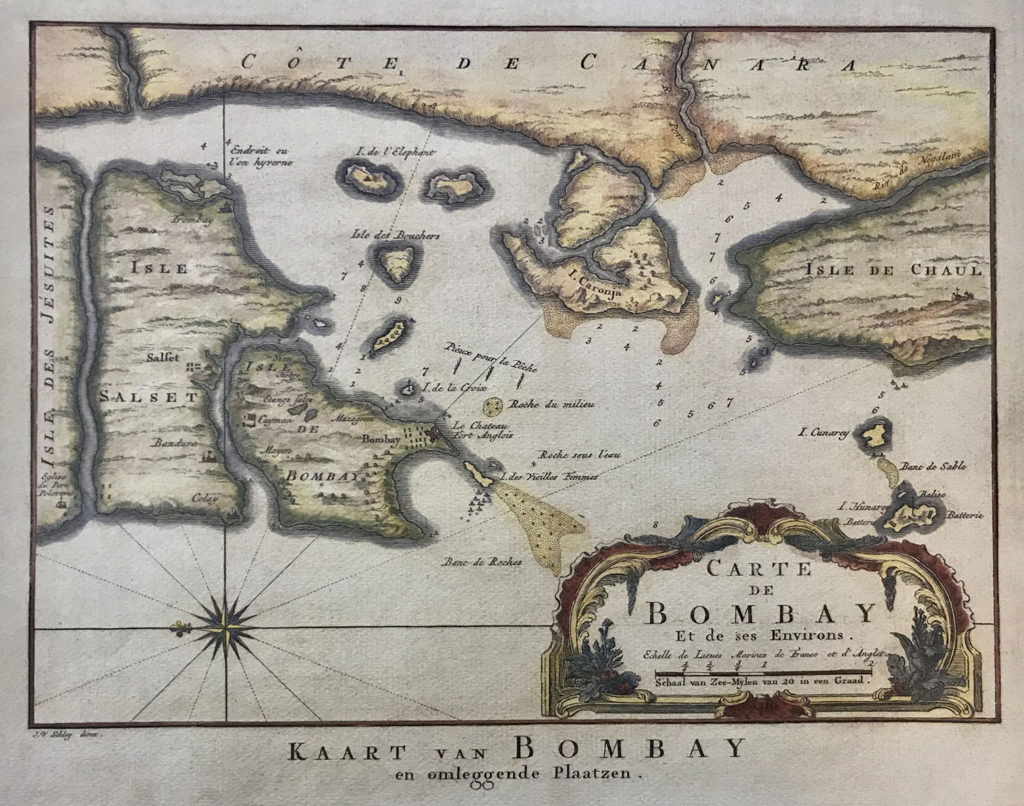
Kaart van Bombay, en omliggende plaatsen (Map of Bombay, and surrounding places)—this is a reprint of the original map (c.1745) engraved by Jean Nichola Bellin for the 15-volume book ‘Histoire Generale des Voyages’
The modern city of Mumbai is a thriving cosmopolis sheltering over ten million people, and growing. During the second half of the 20th century, the metropolitan sprawl of the city expanded at an exponential rate northwards. Moving over the Bandra and Mahim creeks this rising population occupied almost all available land in and around the Salsette Island, the clutch of islands immediately north of the original seven and including present-day Bandra, Andheri, Kurla and the stretch between Chembur and Thane.
The northern suburbs are not a particular favourite among tourists to city. Apart from the Kanheri Caves located inside the Sanjay Gandhi National Park and perhaps the nightlife of Carter Road or Pali Hill, there is nothing much ‘to see’ here. There is only the overcrowded roads of Goregaon, the confusing train station at Andheri and the general cacophony of an overgrown city.
This was not always the case. Years before the Portuguese arrived in 1534, the Salsette Island was witness to a glorious period of political, religious and commercial triumphs. This was an age when rulers fought for power and control over the island, inscribed warnings and tributes on ‘hero-stones’ and hosted Buddhist monks in elaborate caves.
The story of Salsette Island is as old as the earliest Koli settlers of 600 BCE but for now, it can begin with the Shilaharas.
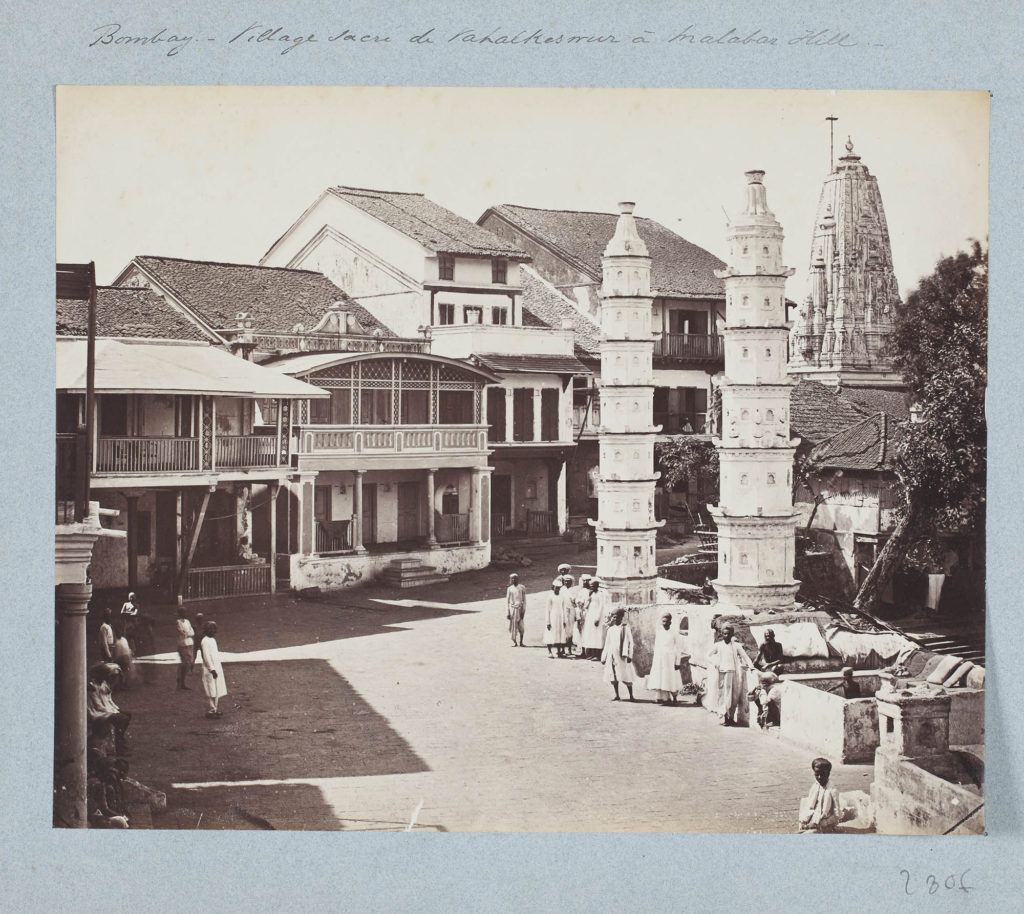
‘Village sacre de Vahalkeswur a Malabar Hill’, view of the Rameshwar Temple and the adjacent temple complex in Walkeshwar
The Shilahara Dynasty was a clan that established itself in north and south Konkan in an area that included Mumbai, and their capital was in Thane from the 8th to 13th centuries. Originally vassals of the Rashtrakuta dynasty, the Shilaharas rose to power through royal land grants and came to establish one of the most influential kingdoms in pre-modern Konkan. Their contributions to Mumbai and its precincts in particular are the Walkeshwar and Ambernath temples, hero stones in Borivali that pay tribute to the royal navy and the ever-mysterious ‘gadhegal’ or donkey-stones. Scattered all over the suburbs of Mumbai and beyond, the gadhegal stones were declarations of land-grants accompanied by an imagery of a donkey in sexual union with a woman. These stones have come under the purview of serious academic research only now, and various theories have been offered about the perplexing iconography.
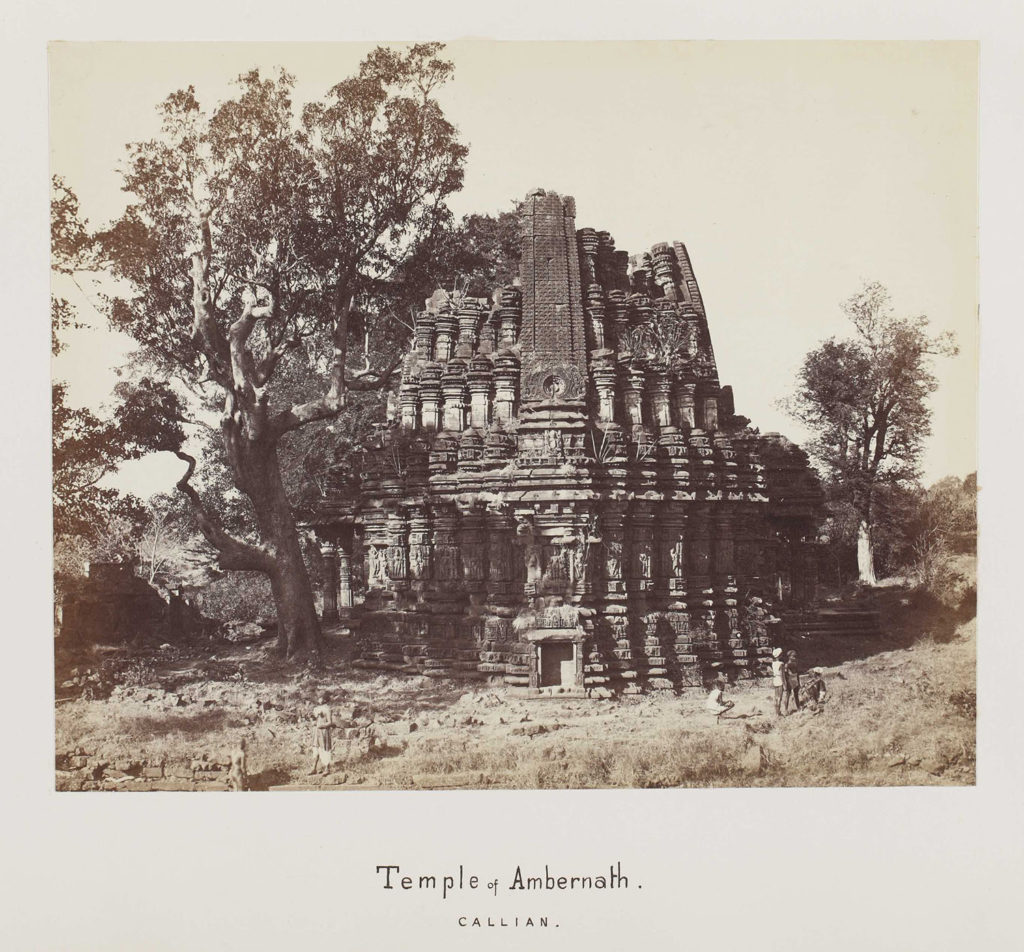
Ruined Temple of Ambernath, Callian (Kalyan), from ‘The Photographs of Western India’ (Vol.2), c. 1855-1862, by William Johnson and William Henderson
It might be a while before one reaches an acceptable conclusion on the ‘donkey stones’, but it is proven beyond doubt that the Salsette Island under the Shilahara dynasty was a culturally and commercially rich centre of pre-Portuguese Mumbai.
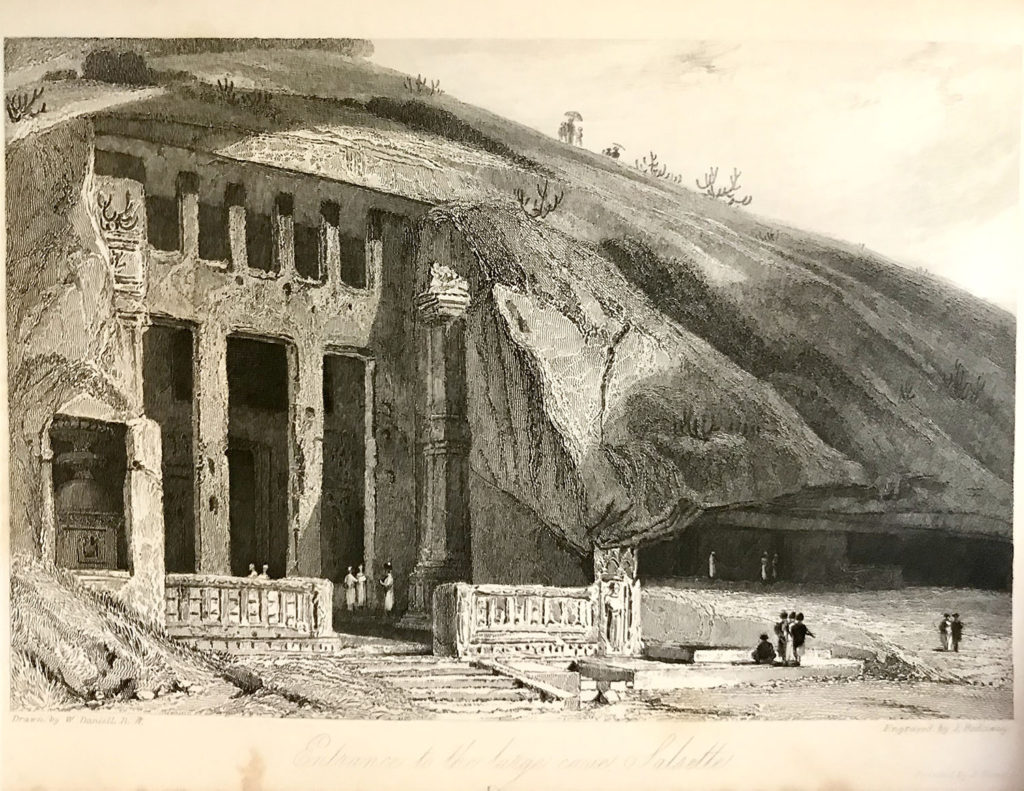
Entrance to the large cave of Salsette, engraving by J Redaway, based on a drawing by W Daniell—depicts Cave 3 at Kanheri, one of the oldest in the complex
Another enduring symbol of ancient Mumbai that continues to attract visitors from across the world is the Kanheri Cave complex. Situated inside the green expanse of Sanjay Gandhi National Park, the complex boasts over a hundred caves, big and small. The word Kanheri is derived from the Sanskrit ‘Krishnagiri’ or ‘Kanhagiri’ meaning ‘black mountain’, perhaps referring to the black basalt found so abundantly in the Konkan. For over a millennium between the 1st and 11th centuries, the caves functioned as prayer halls and residences for Buddhist monks during the monsoons. The complex thrived primarily due to its proximity to the ancient port town that consists of today’s Nalasopara (then called Sopara), Kalyan, Thane and Vasai. These active trade centres established commercial relations with countries as far as Mesopotamia and Egypt, the revenue of which was then used lavishly to support the monks in residence. In fact, it is not uncommon to find all major monastic establishments of ancient India situated along major trade routes and in close proximity to trading towns.
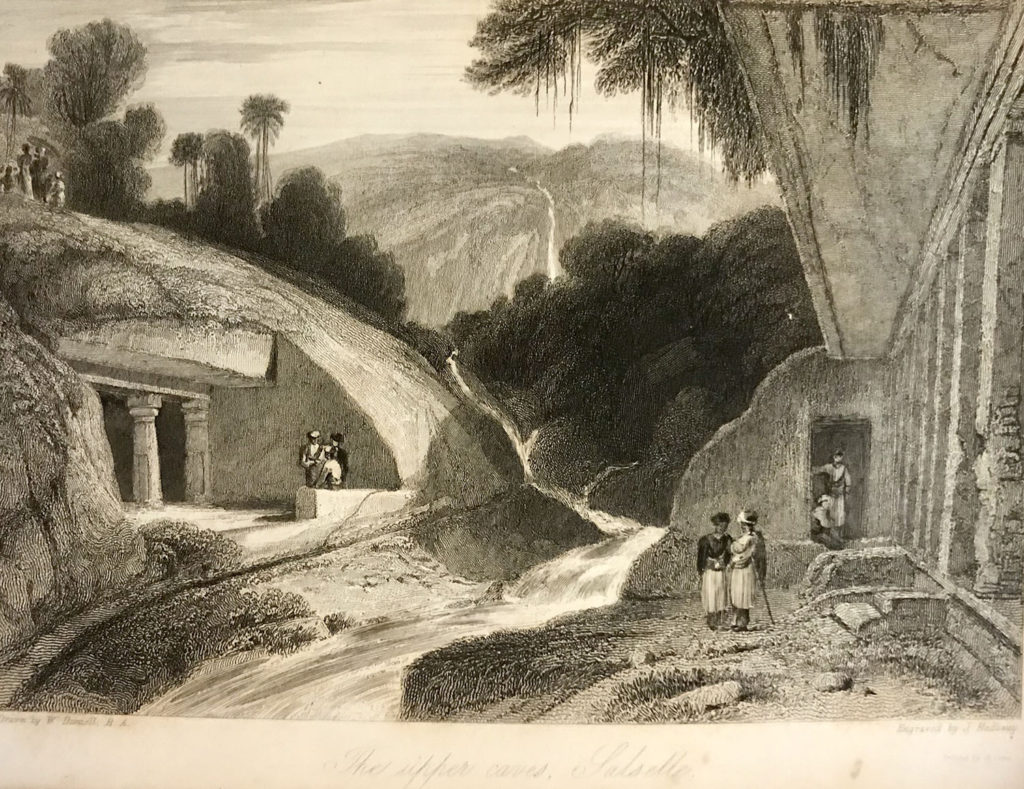
The upper caves of Salsette, an engraving by by J Redaway, based on a drawing by W Daniell—depicts caves 10 and 12 at Kanheri
The modern city of Mumbai is scattered with ancient relics across forest reserves, government parks and reclaimed lands—but the treasures are not limited to that. At a mere ten kilometres into the Mumbai Harbour from Gateway of India lies a site that figures in every tourist’s Mumbai itinerary. The Elephanta Caves.
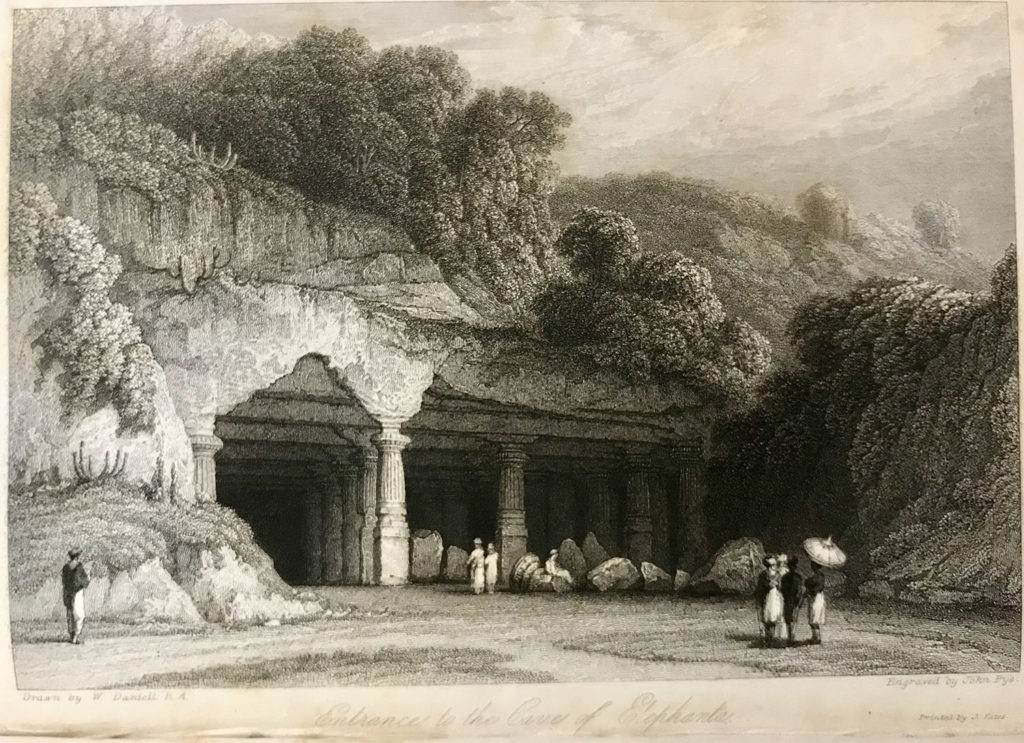
Entrance to the Cave of Elephanta, an engraving by John Pye based on a drawing by W Daniell
Originally called Gharapuri and identified as the capital of the Mauryas in the Konkan, the island is spread across two hillocks separated by a narrow valley and dotted with numerous archaeological remains going as far back as the 2nd century BCE. The highlight of this small island, however, are the 5th-century Hindu and Buddhist caves that have survived years of habitation, invasion and neglect. The largest cave in the complex is dedicated to Sadashiva (a fully manifest form of Shiva with a super complex iconography that is a story for another time), and a twenty-feet tall statue of Trimurti greets visitors as they enter. The cave is carved out to resemble a structural temple with a mandapa, garbhagriha, two lateral chambers and three doorways. If one moves a little beyond the usually crowded bigger caves, one may find traces of Buddhist occupation in small stupas and two rather plain-looking caves.
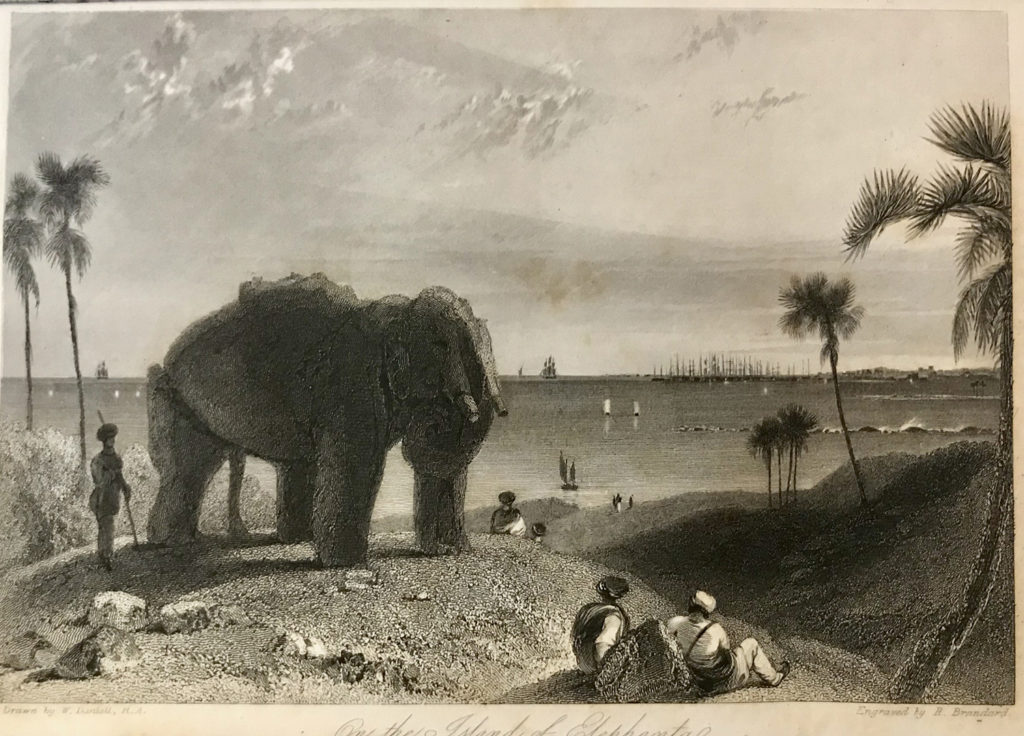
‘On the Island of Elephanta’, an engraving by R.Brandard based on a drawing by W Daniell—this is the statue after which the cave complex was named
When the Portuguese docked at this island in the 15th century, one of the first things they saw was a basalt elephant standing right at the edge, as if guarding the land and its ancient mysteries. Thanks to this statue and the explorers’ general lack of imagination, we now know the islands as Elephanta. Other than rechristening the island, the Portuguese were also supposedly responsible for a large amount of the damage done to caves—apparently the ancient statues were used for target practice by soldiers.
It’s common knowledge that Mumbai is a city that owes its existence to a marriage between two international trading companies and a dowry. But this city is older than most of us would imagine. For years, it has been harbouring a secret history in plain sight, one that predates the arrival of the Europeans and migrant labour by centuries. From the bylanes of Jogeshwari to the beaches of Chowpatty lie scattered stories of meditating monks, valiant kings and immortal naval soldiers waiting to be uncovered.
All you have to do is look.
Shubhasree Purkayastha is Curatorial and Research Associate at Sarmaya



